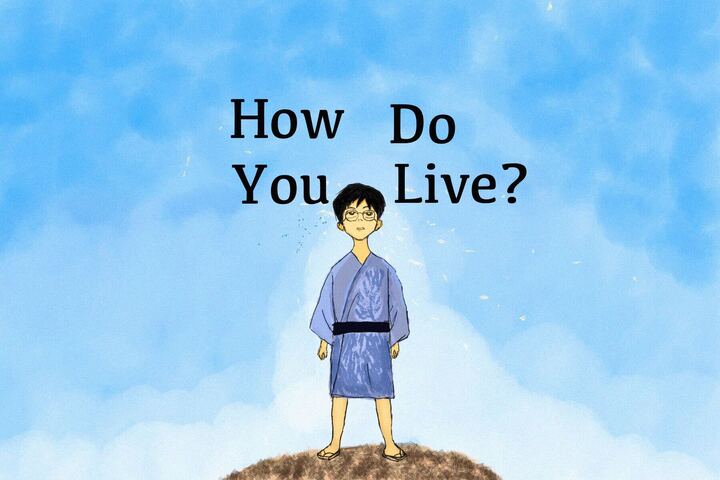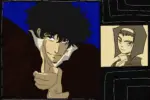Disney fans are not typically hard to spot. No matter who you’re talking to, there’s a good chance that person knows of Mickey Mouse. Disney is known for creating nostalgia in the hearts of every generation. It is easy to get swept away by the magic of the classic fairytales, as the familiarity of it all reminds us of home.
Appreciation for Disney begins and ends with the viewer’s sense of nostalgia. While praise is frequently heaped onto Disney, its films are rarely commended for their complexity or nuance. Disney films are ultimately made for children, so the storytelling doesn’t necessitate the impactful metaphors that adults look for in a good film. Children’s films do not have to lack complexity, in fact, the integration of more developed themes in children’s films can encourage kids to stretch their imaginations beyond the worlds presented to them on the screen.
The films of acclaimed animator and director Hayao Miyazaki are known for granting their viewers freedom of interpretation. Miyazaki is one of the most well-known names in Japanese animation, one of the most successful and robust animation markets in the world. Miyazaki is also known for being the co-founder of Studio Ghibli, the animation studio where he made many of his most acclaimed films. His upcoming film, “How Do You Live,” is mysterious, as there has been little to no information released about its content so far. In looking at his past, it may be possible to decipher what his intentions are for the future.
Ghibli films typically feature abstract plotlines dealing with fantasy, spirits and evil. Miyazaki‘s work is interesting for its ability to nestle historical and political commentaries on the real world inside fantastical presentations. Take “Howl’s Moving Castle” a film following a young woman’s journey to reverse a curse. She finds herself in the company of a wizard and his magical castle. While the film is a love story at its core, the war-torn setting sharply contrasts with the central romantic plotline. His ability to combine reality and fantasy is what makes Miyazaki so renowned, and it is what gives his films an edge; though they are designed for children, they feature serious undertones that can be understood more deeply by an older audience.
Miyazaki himself witnessed a time of tragedy through a child’s eyes. Born in Tokyo City, Japan in 1941, his earliest memories include a bombing of his childhood hometown amid the chaos of World War II. Miyazaki never shied away from portraying his tragic experiences in his artwork, rather, those experiences seem to act as a driving creative force. He believes that you’re never too young to internalize evil. This theme manifests itself in many of his films, including his massively popular 1988 work “My Neighbor Totoro,” a film about two young girls whose imaginations run wild as they cope with their mother being moved to hospice care.
When discussing his perspective on the intelligence of a child, Miyazaki said “Children understand intuitively that the world they have been born into is not a blessed world.” He summarized his purpose for filmmaking in another quote, “I wanted to convey the message to children that this life is worth living.”
Post World War II Japan’s relationship with animation is a unique historical topic and offers another lens through which to analyze Miyazaki’s career. From the late 20th-century to the present day, critics have claimed that non-Japanese peoples’ interests in anime overshadow their respective abilities to recognize and critique the atrocities Japan committed during WWII. Japan’s earliest animated films were forms of propaganda, which set a questionable foundation for the animation industry to be built upon.
Unlike other 20th-century Japanese filmmakers, Miyazaki acknowledged the past for what it was: a tragedy. Turning away from war apologia, his films include themes of looking forward to the future. His free-spirited protagonists focus on their personal desires rather than the chaos that surrounds them. His latest film, “The Wind Rises,” embodies these characteristics. Focused on a young Japanese man with a love for airplanes navigating his place in world, the film shows how WWII affects the young man, but in the end, the most important plot point is the loss of the girl he loves.
Miyazaki claimed to retire after the release of “The Wind Rises,” but he is working on one final film. At the age of 82 and a decade since the release of his last film, “How Do You Live” was announced in 2016, and is set for release on July 14, 2023. While it is speculated to be based on a novel of the same name, Studio Ghibli executive Toshio Suzuki denied this rumor. This film has been in the works for around seven years. Ghibli has been elusive and sparse with the film’s marketing; they’ve only shared one promotional poster thus far.
Miyazaki’s return to filmmaking for “How Do You Live” demonstrates the consistency of his character and why it has been so hard for him to retire. His personal beliefs reflect the career he has built for himself to such a degree that it is practically impossible for the two to be separated. While Disney continues to profit off of fans’ nostalgia through its consistent live-action remakes, it has been 14 years and counting since its last hand-drawn feature film, “Princess and the Frog.” Meanwhile, Miyazaki can’t keep himself away from creating one more hand-drawn film. It may have taken seven years to produce, but this suggests Miyazaki’s resistance to release the film until it reached unique, hand-drawn perfection. The lack of advertising for the film implies that he is not asking for much from the public, but he is asking for those who love his stories to join his side for one last adventure.
At a point in his life when there are two generations separating him from childhood, he continues to create for children and the hope that he finds in them. Suzuki stated that Miyazaki is dedicating the film’s creation to his grandson: “Grandpa is moving onto the next world soon, but he is leaving behind this film.”
















